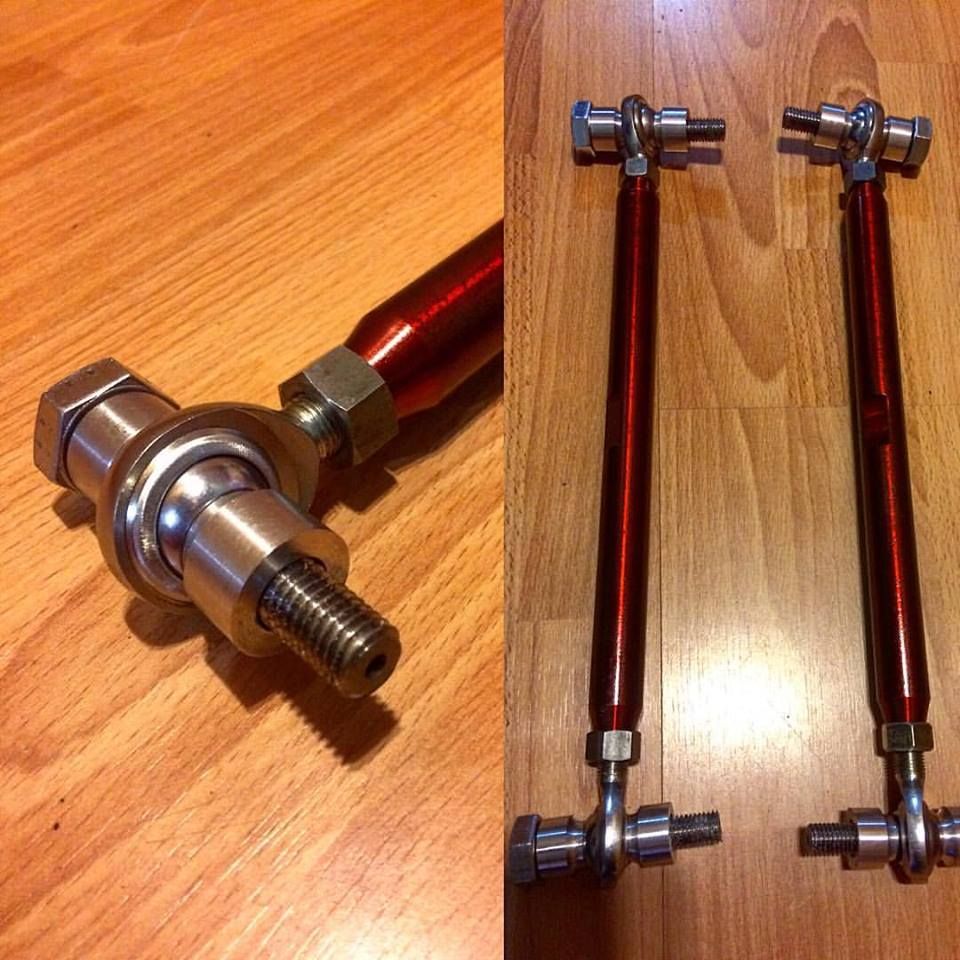240 Series Adjustable Torque rods:
Tools needed:
right angle drill
1/2 drill bit
3/4 wrench and 3/4 socket
Welder (not really needed on the car, you can do this ahead of time)
Cutoff wheel
Parts needed:
I used link rod and threaded adapters from
www.hrpworld.com You'll need 4 1/2X20 threaded inserts and matching rod. This is what I used You'll need about 3 feet of rod.
4 1/2X20 Heim Joints I used these (CM8s)
4 bolts, I used 1/2X20 Grade8 3 or 3.25" long, 4 nuts and washers. Grab a few extra nuts just in case. Also, you'll need 4 Jam Nuts for the rod ends, but any normal nut will work.
Something metal and tubular that is atleast 1/2" ID. 6" is plenty.
Install:
OK, so I bet your wondering why you want to do this. Well, when you lower a 240, it throws the rear suspension geometery off. Everyone knows already about the panhard, but the torque rods also have a negative effect. When the suspension compresses (or is lowered) the torque rods fixed length causes the axle to rotate back, or up if you look at the driveshaft. This not only moves the driveshaft closer to the floor but it also causes the wheels to be moved further back in the wheel wells.
The other benifit is you get rid of the sloppy bushings and replace them with solid heim joints. If your abusing the car at all you've no doubtly turned what was a round bushing, into this:
Mine were not only ovalized, but the mounts were completely cracked through on both sides and both ends!
So heres what you need to do. When you get your parts from HRP your going to get the rod in uncut form. What you need to do is cut the rod so that your total length from threaded insert to threaded insert is 12.5". I found this gives plenty of adjustment. Now, you dont cut the rod this long, you adjust for the inserts at both ends.
Then slide the inserts in and have them welded up. You should end up something like this
Now like I said, the TOTAL length is 12.5, the adapters you use may vary so be sure to adjust. +/- 1/2 inch or so shouldn't be a problem.
Now, I bet your wondering why you need all the standard stuff. Well, our cars torque rods use Metric bolts, or 12mm's. Problem is, the heim joints are made for US standard, 1/2 which equates to 12.8MM. This gives .8mm slack in the joints. Do NOT think this is acceptable, it will quickly turn the bolt into a pretzel if you try to run it this way.
So, heres where the drill comes in. You will have to slightly open all the holes that the former bolts went through. Piece of cake. You should be able to slide your bolt through like this.
The car side is a bit more challenging. Obviously, the bolt threads into the frame rail. The outter bracket is easy to modify, so just drill out the frame with the 1/2" drill through the threads. You could probably actually rethread this with a tap for 1/2X20 threads.
Or, the threaded insert will break out of the frame. This happened to me on one side before doing this anyways. So, what I did was take a cut off wheel and cut a rectangle hole out of the bottom of the frame rail like so:
Then, I slid the bolt through, using fender washers on both side and just put a nut on the other end.
Now, before you do this, you can obviously see that theres some "slack" between the rod end and the bolt ends. What you need to do is make some "spacers" to take up the slack. Obviously, your sizes will vary so just do your best.
Then, just tighten everything up and you should have this:
Adjusting the torque rods:
I found the best techique is to leave one side completely off. Mount the one rod and adjust it where you think you need it. Jack the axle up to just before it picks the car off the jack stands. Look at the side of the car and see abouts where the wheel falls in the well. When you think you've got it close, lower the car on to the ground and see if it looks good. When it is adjusted right, install the other torque rod to the same length.
You should be able to go from this:
to this
or even more centered if you want.
Doug
stolen from
http://forums.turbobricks.com/showthread.php?t=18565

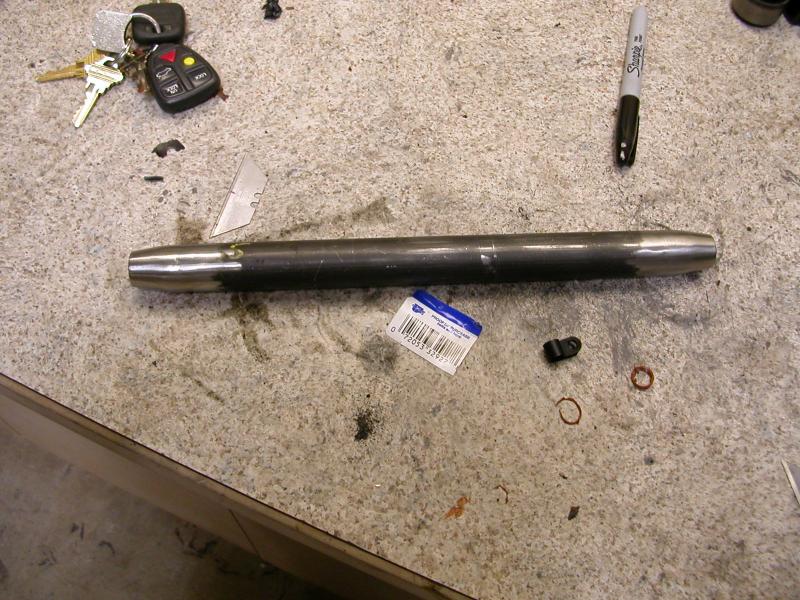
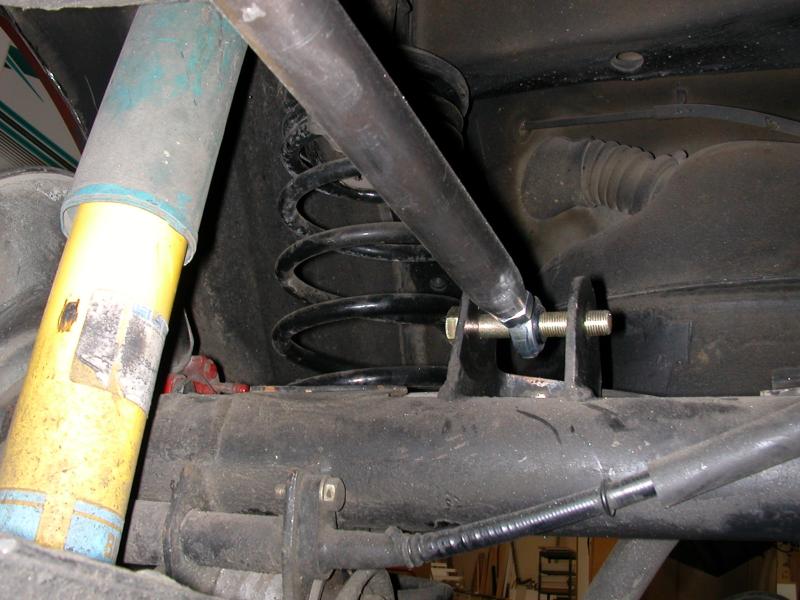
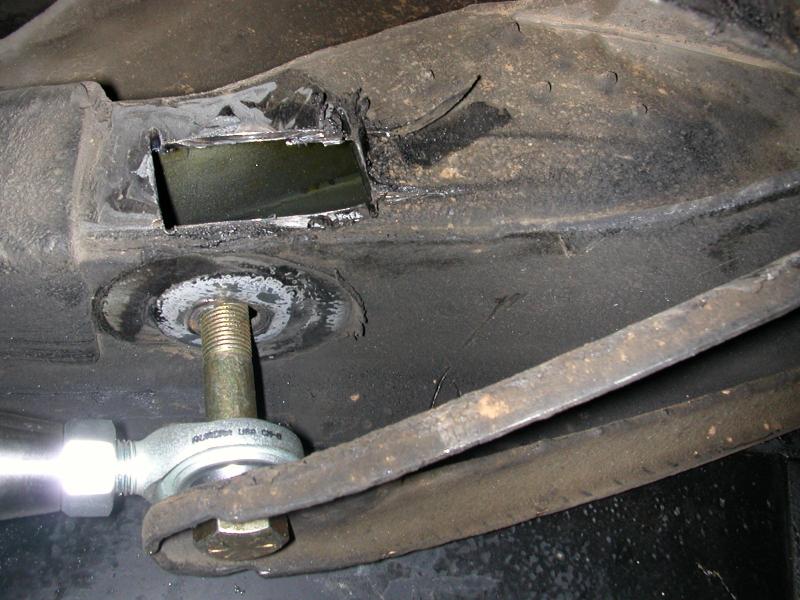
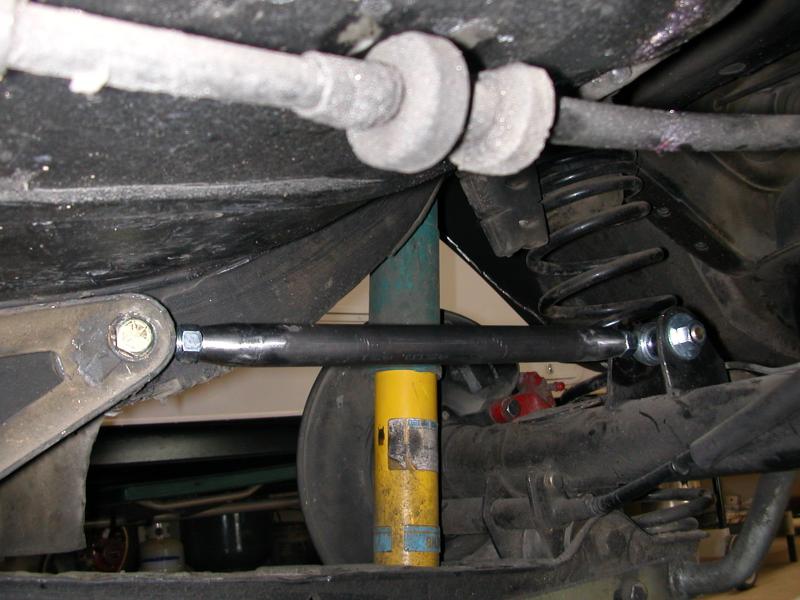
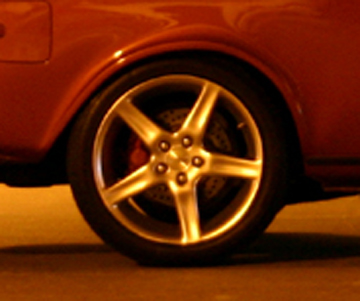

 YES!
YES!

